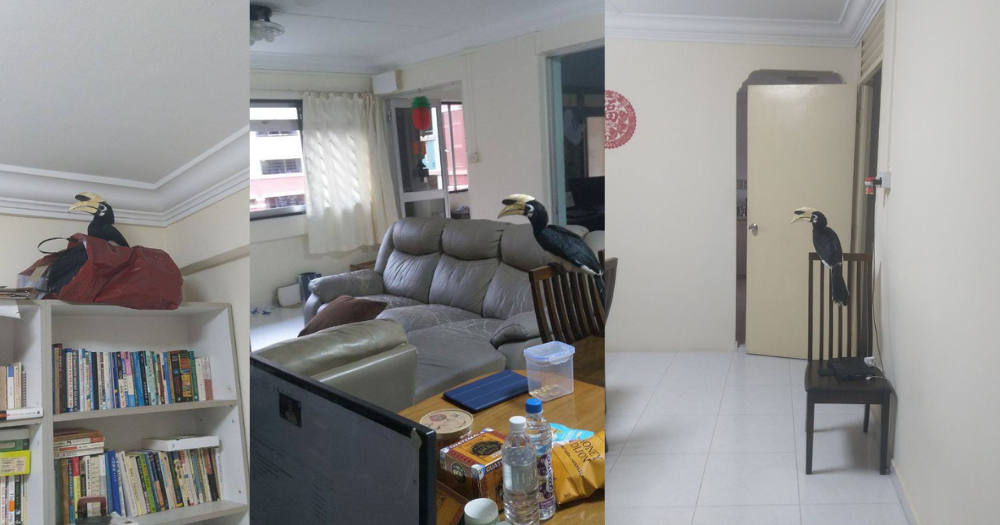Hornbills, a bird species that was once thought to be almost locally extinct, are now thriving on mainland Singapore again thanks to conservation efforts.
Pasir Ris, perhaps given its close proximity to Pulau Ubin, is where a significant population of hornbills live.
Wildlife-human interaction
One resident, Ho Xiang Tian, recently had two uninvited guests enter his home.
A pair of hornbills flew into his house on Dec. 17 afternoon when it was raining heavily, perhaps to seek shelter from the harsh weather conditions.
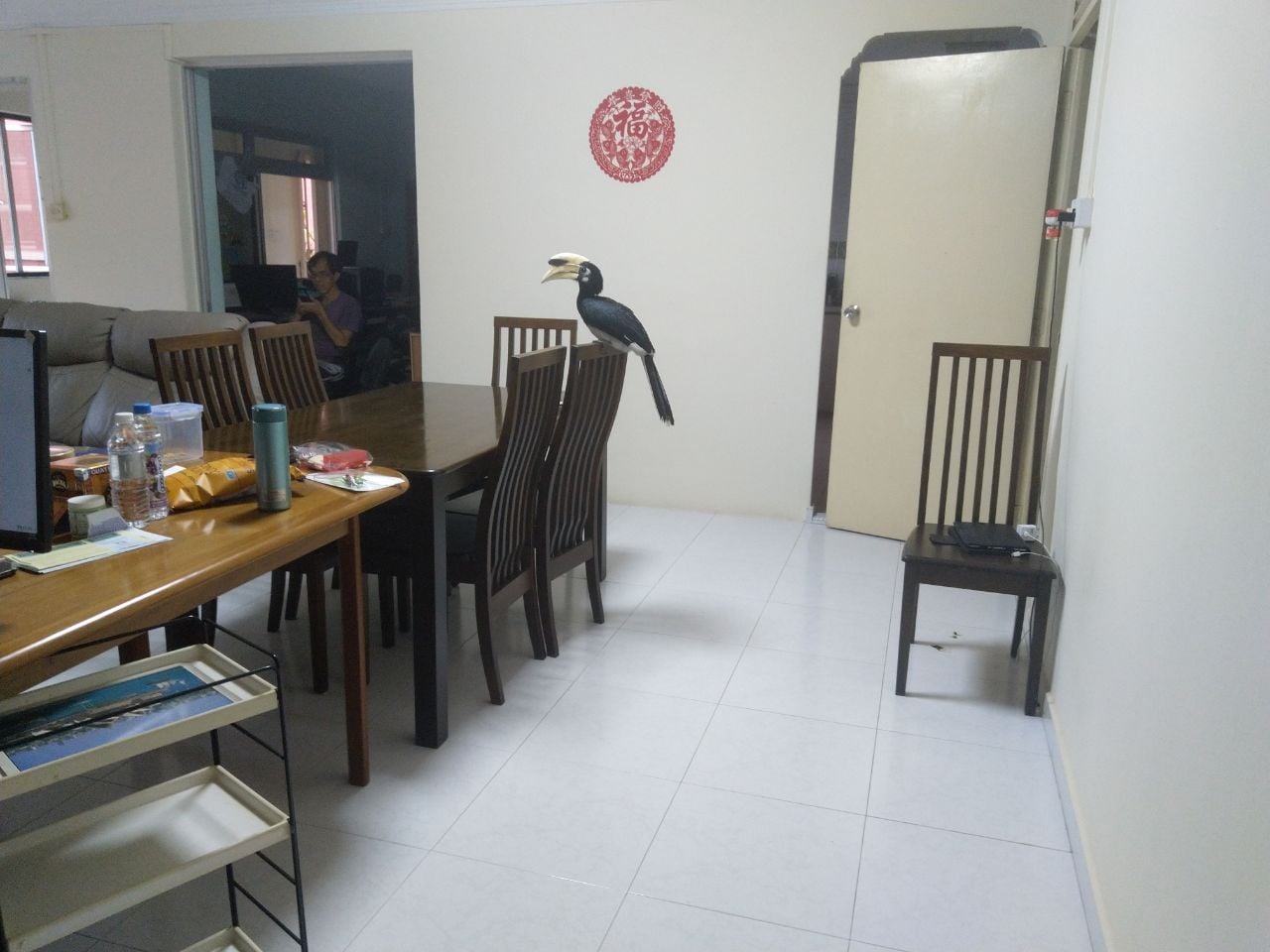 Photo by Ho Xiang Tian.
Photo by Ho Xiang Tian.
Unexpected guests came to seek shelter
The two hornbills came in one after another through the main door, as Ho's windows at home were all shut closed, he recalled in a Facebook post.
While he found this a "bizarre and unexpected" experience, Ho's family eventually housed one of the hornbills for one-and-a-half hours.
Allowed birds to stay
Ho recalled his mother was shrieking, while his father thought of chasing the guests off.
However, the elders in the family deferred to Ho, who is a long-time environment and nature advocate.
Ho called wildlife rescue group Acres for help, but the group was overwhelmed with calls that day and could not come by.
That left Ho to handle the situation by himself.
The first hornbill flew straight to the top of a bookshelf at the corner of the house, Ho recalled.
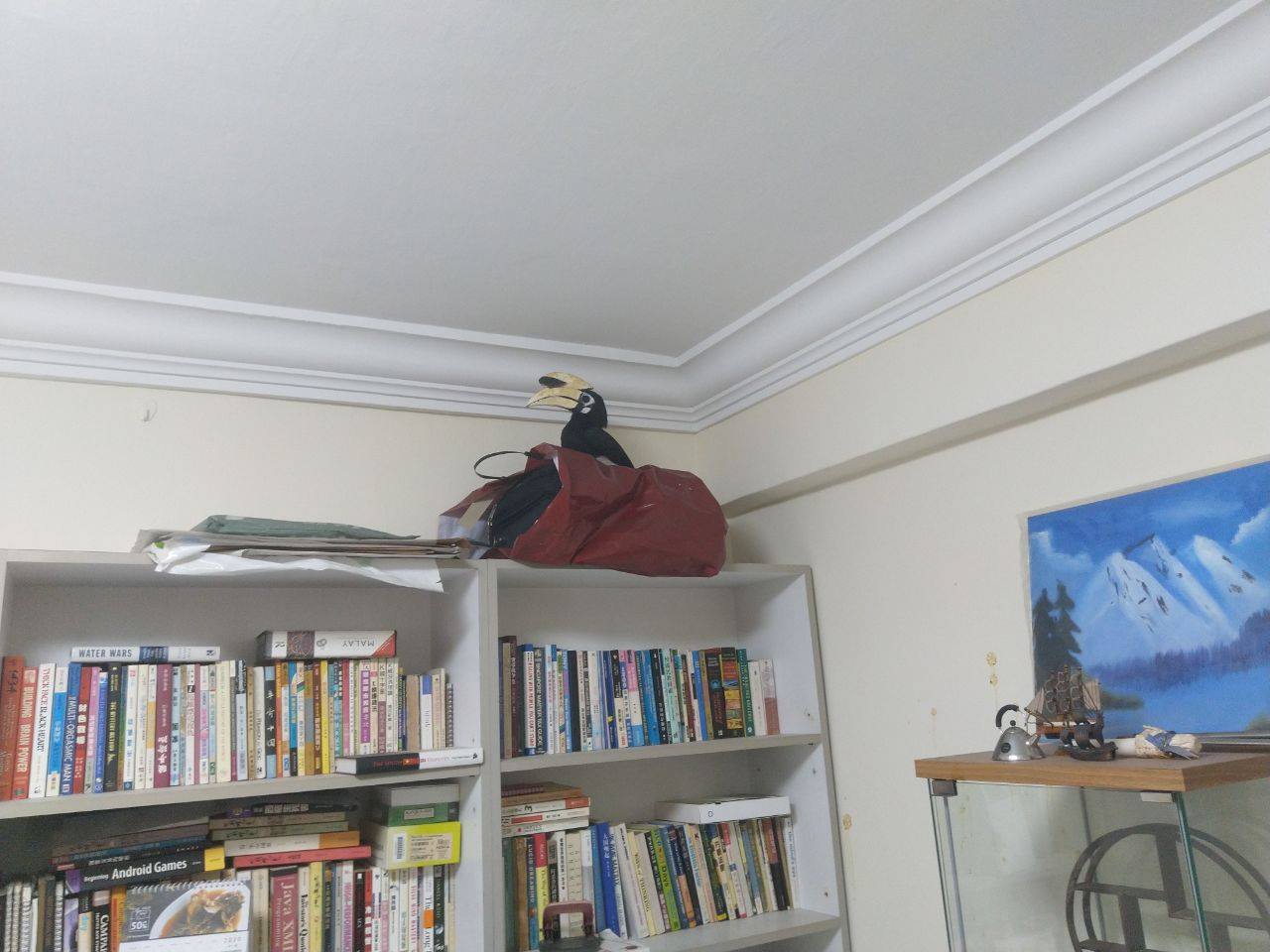 Photo by Ho Xiang Tian.
Photo by Ho Xiang Tian.
The second hornbill flew in, but perhaps realising it was not on familiar ground, decided to fly out after pooping all over the place.
One hornbill stayed for 1.5 hours
To ensure the safety of the hornbill, which decided to make itself somewhat comfortable in Ho's home, the family opened all windows so that the bird could fly off easily.
The family also turned off the fan, and ensured no food fell within its sight.
Ho recalled that the remaining hornbill was just idling around in his home and hopped from one spot to another during its short stay.
The bird landed on the bookshelf and hopped from chair to chair in the house before leaving.
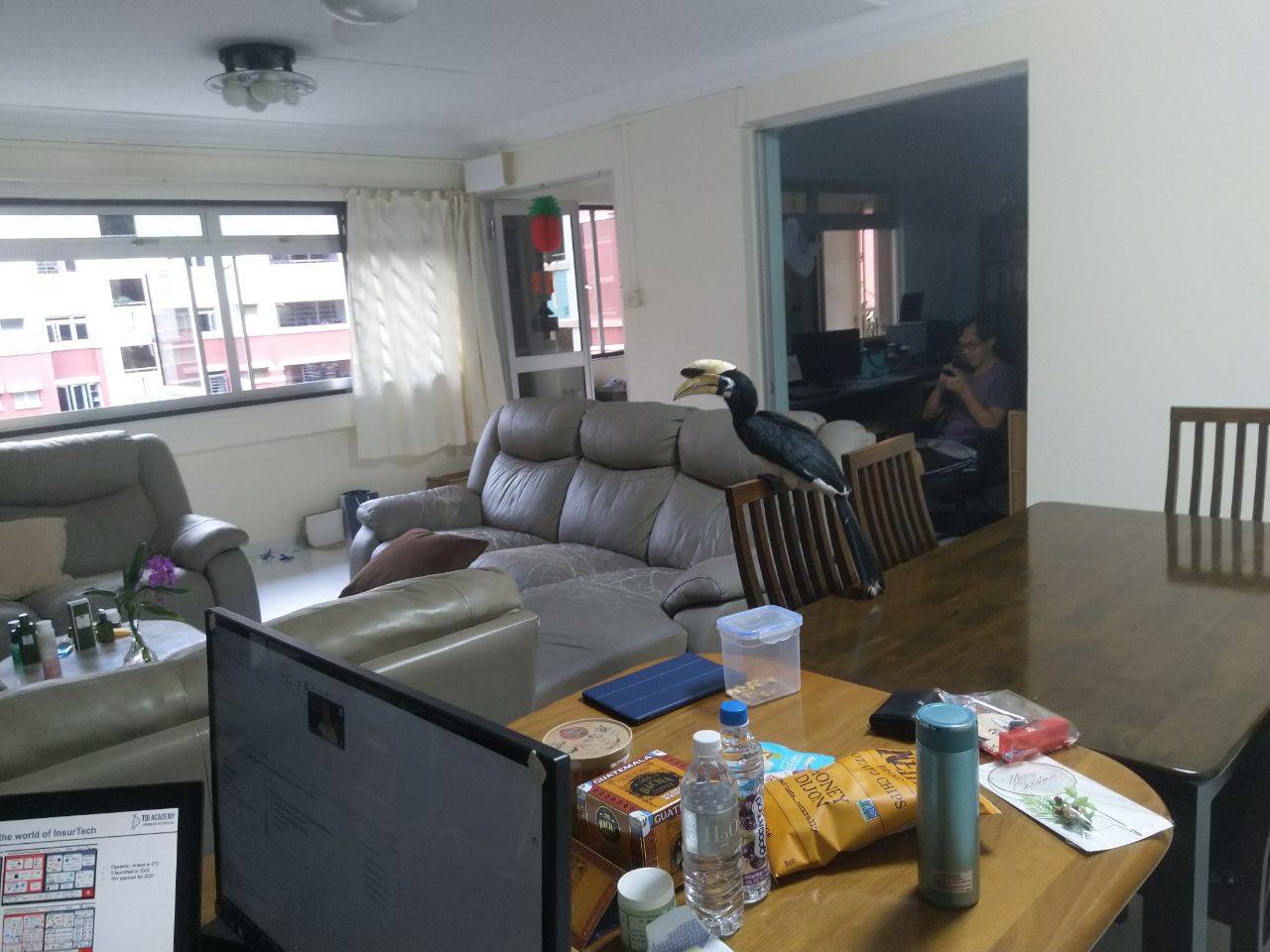 Photo by Ho Xiang Tian.
Photo by Ho Xiang Tian.
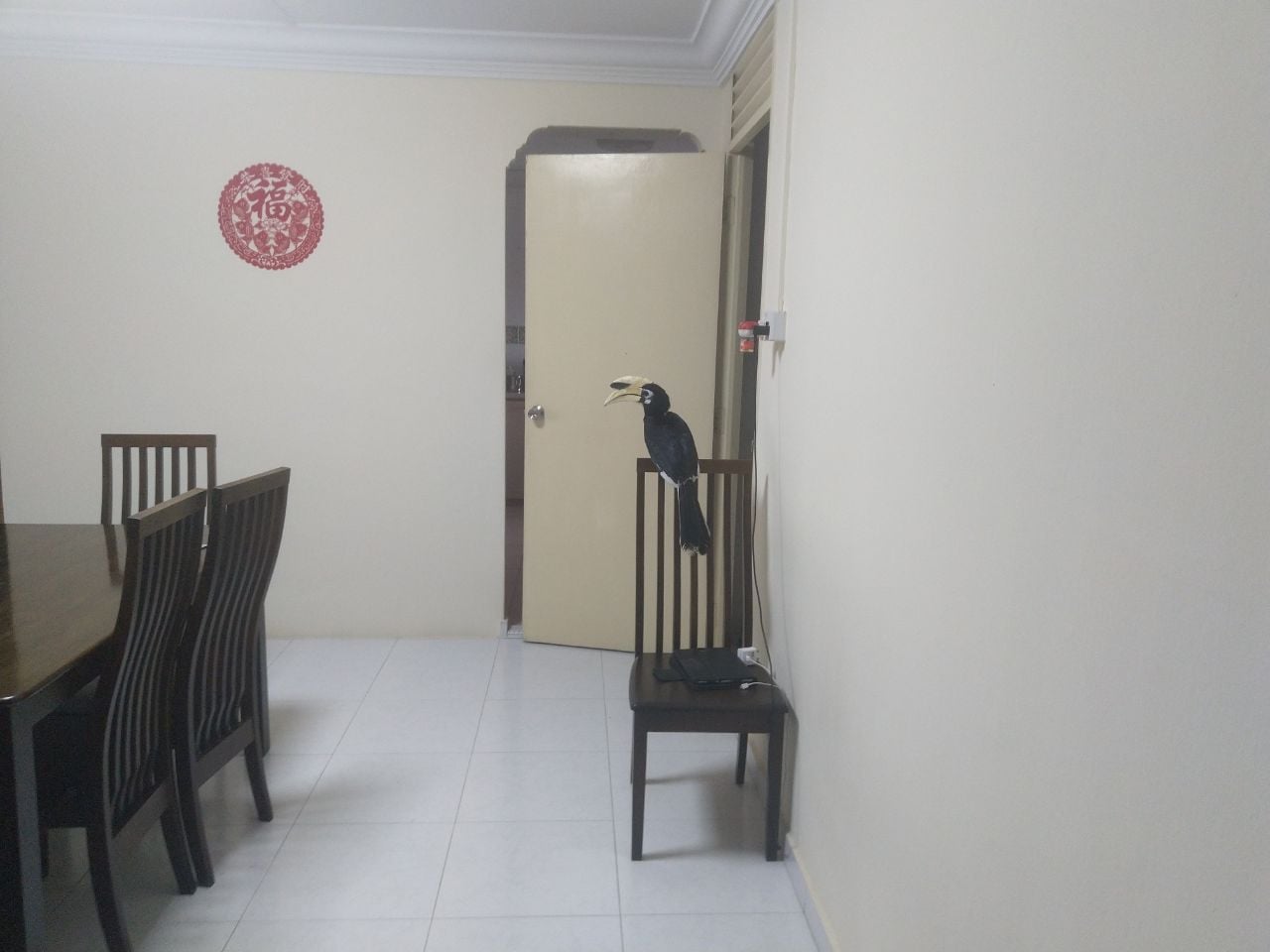 Photo by Ho Xiang Tian.
Photo by Ho Xiang Tian.
After it left the house, the family then spent the evening cleaning up the defecation that the hornbills left behind.
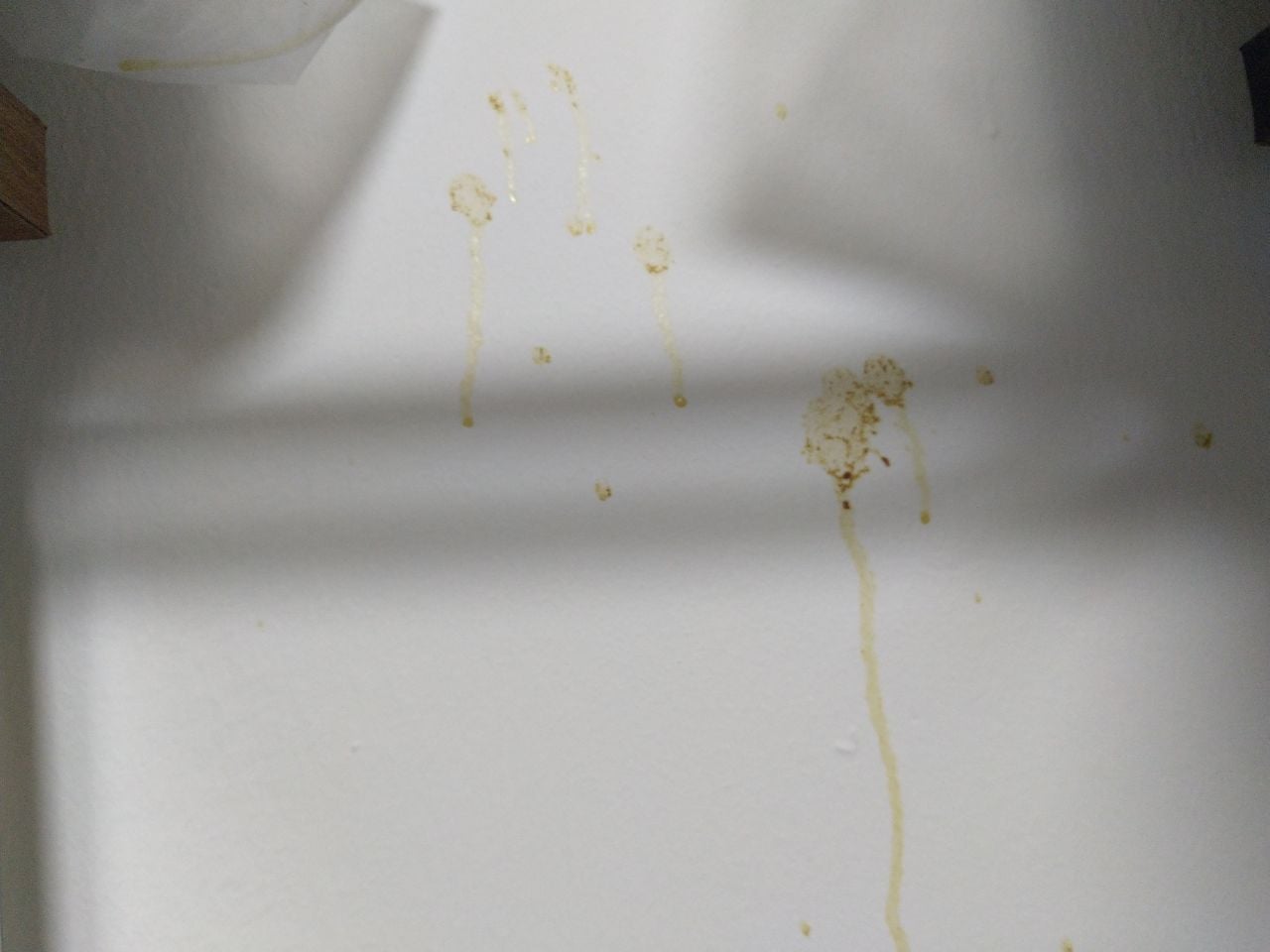 Photo by Ho Xiang Tian.
Photo by Ho Xiang Tian.
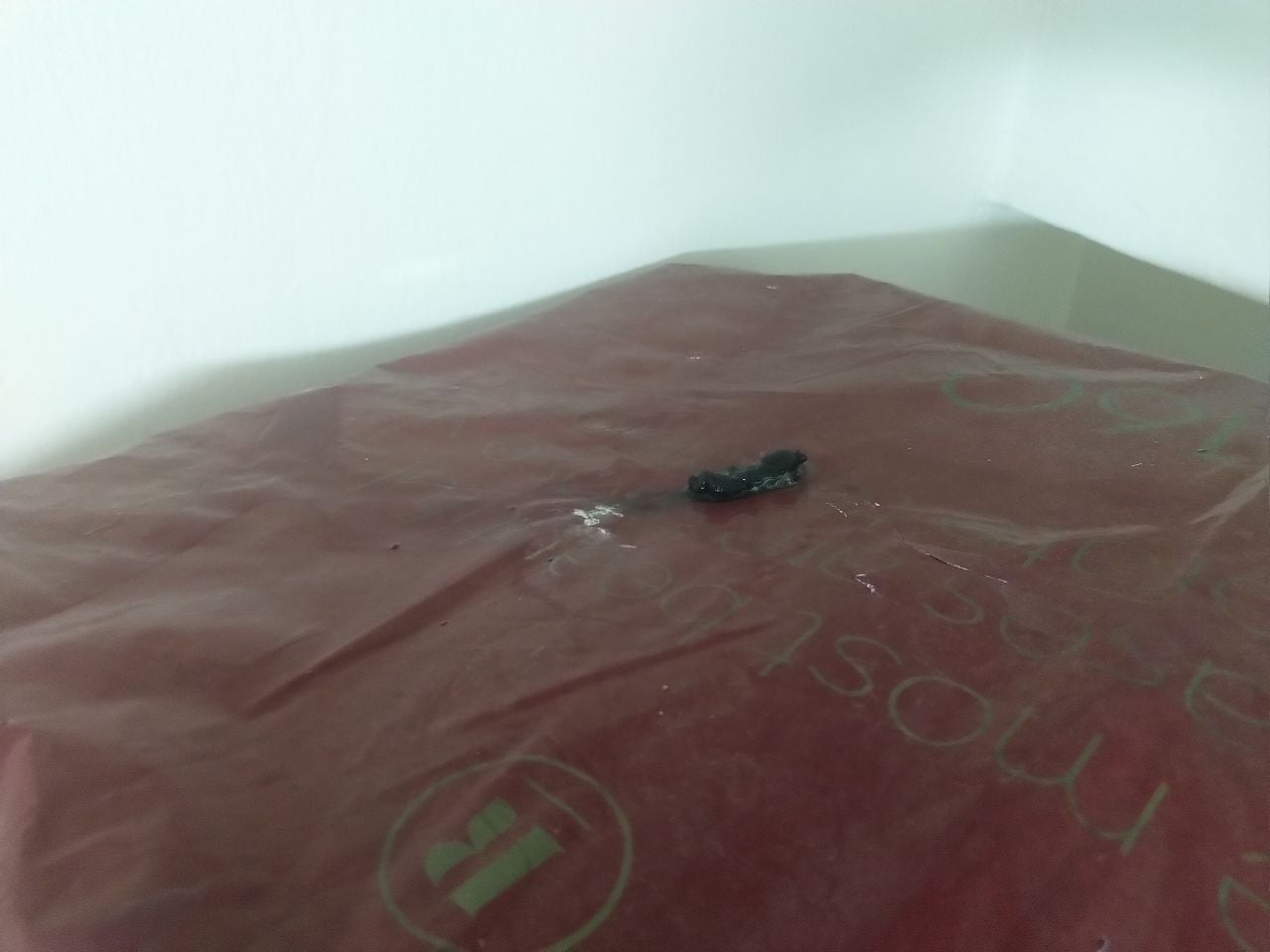 Photo by Ho Xiang Tian.
Photo by Ho Xiang Tian.
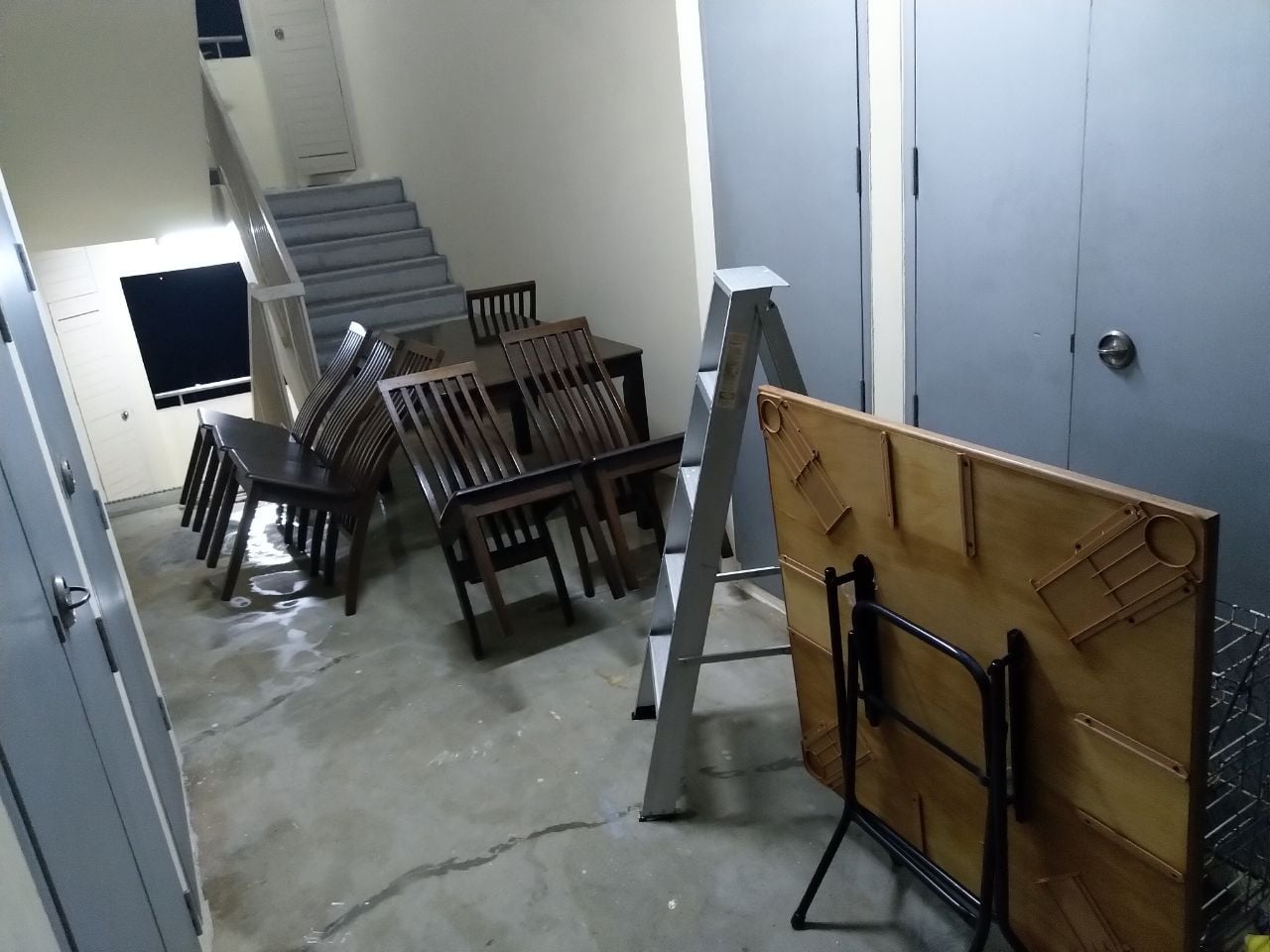 Photo by Ho Xiang Tian.
Photo by Ho Xiang Tian.
Hornbills affected by BTO project?
In his post, Ho also shared that this was not the first time that the family had such a close encounter with the hornbills.
A hornbill came to Ho's house a few months back and stood on a bamboo pole outside the unit on the 10th floor.
Ho said that it was unusual for hornbills to rest at such a high floor as they are usually spotted at the lower floors: "I hear them calling below on most days, so I knew they were around, but they never came up so high."
Ho's family felt that perhaps the removal of the forested area just across the road contributed to these behaviours.
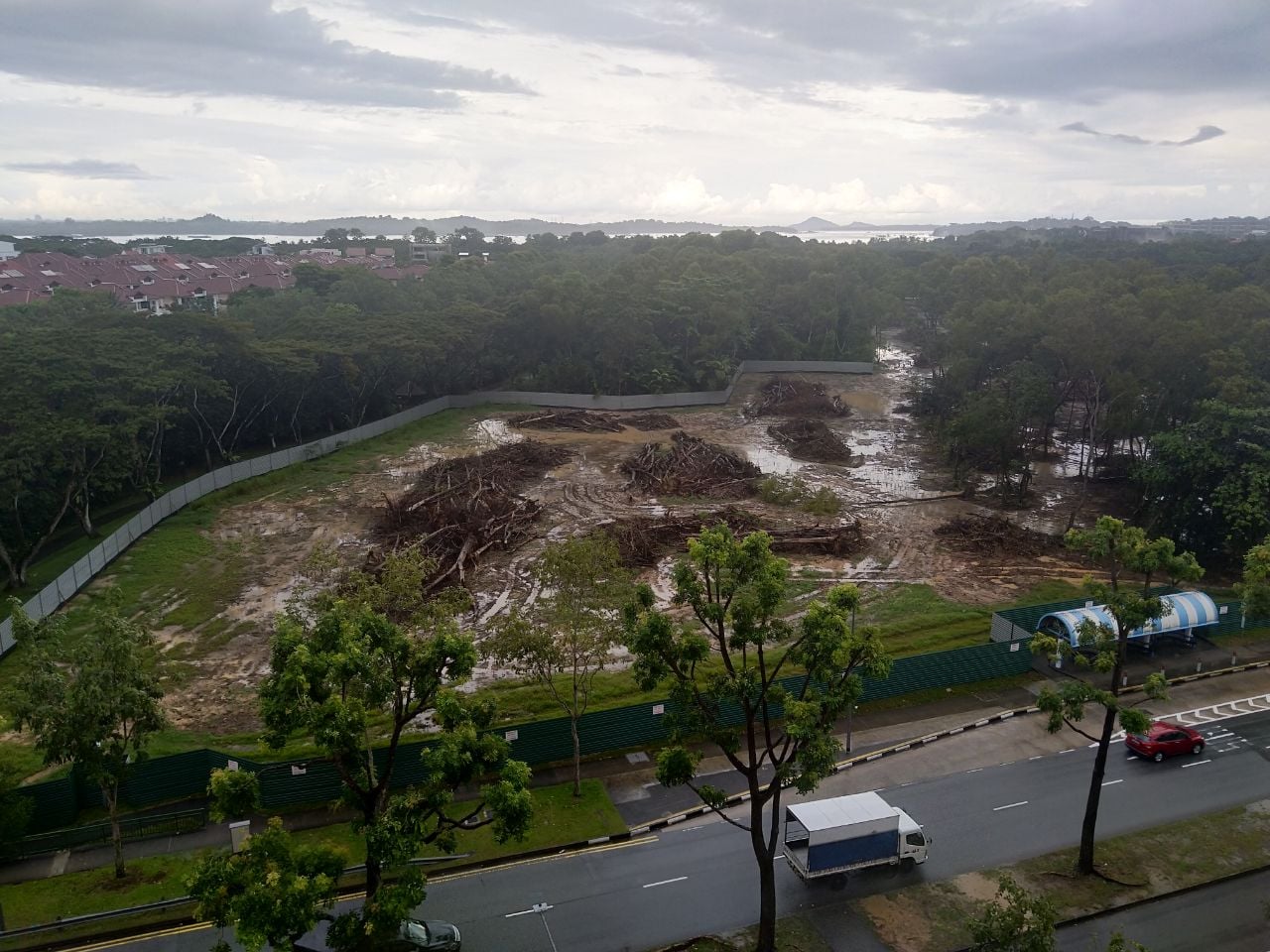 Photo by Ho Xiang Tian.
Photo by Ho Xiang Tian.
The forested area, about 10 football fields size, was removed for the Costa Grove BTO development in recent months.
The same development project has been speculated to have contributed to the increased sightings of wild boars in Pasir Ris Park.
Important to understand why wildlife are entering urban spaces
While Ho was definitely a five-star host to the hornbills, he does not hope for them to come to his house regularly or at all, he told Mothership.
He also pointed to the importance of understanding why wild animals are entering into "human spaces" more often, instead of labelling them as just pests and seeking to cull them.
Ho said:
"Development [of forested land] has been destroying their homes and people feeding wildlife have been artificially inflating their numbers so the animals don't really have a choice, it's [either they] move into urban spaces or die. Though for many, it's moving into urban spaces and die."
Besides expressing concerns on wildlife due to the impact of residential development projects in the area, Ho also highlighted that he observed many residents feeding the wild animals.
"Like my block, people are feeding hornbills from their windows which isn't good, and I see people feeding wild dogs, wild boars, and jungle fowl when I go running sometimes," Ho said.
Prolonged feeding will also encourage wild animals to come too close to people as they start to see people as a source of food.
They might also be disincentivised to seek food in the wild as a result even though there is no lack of food in their natural habitats.
Read more about how feeding will alter wild animals' behaviours here:
We deliver more stories to you on LinkedIn
Top image by Ho Xiang Tian.
If you like what you read, follow us on Facebook, Instagram, Twitter and Telegram to get the latest updates.
